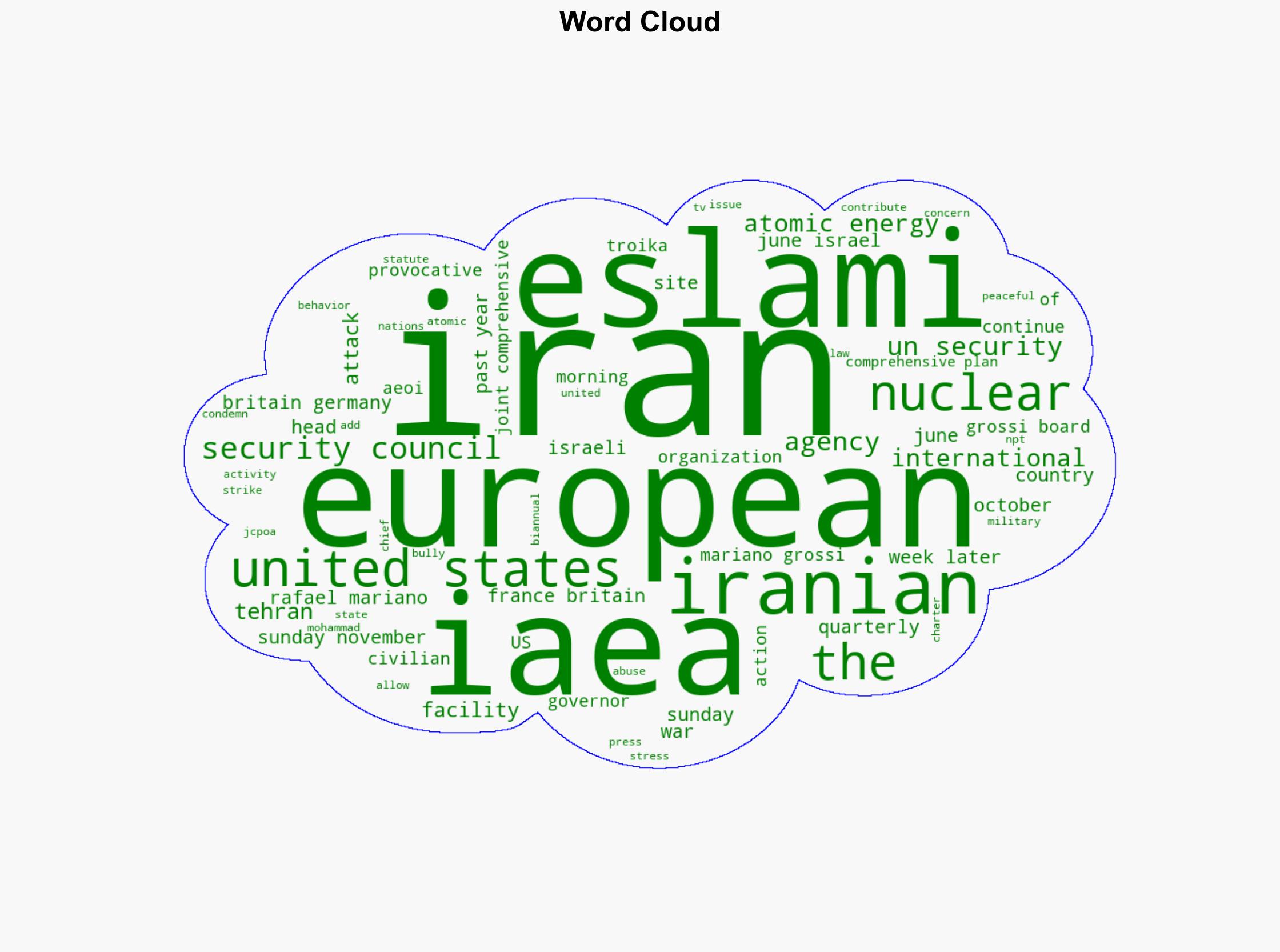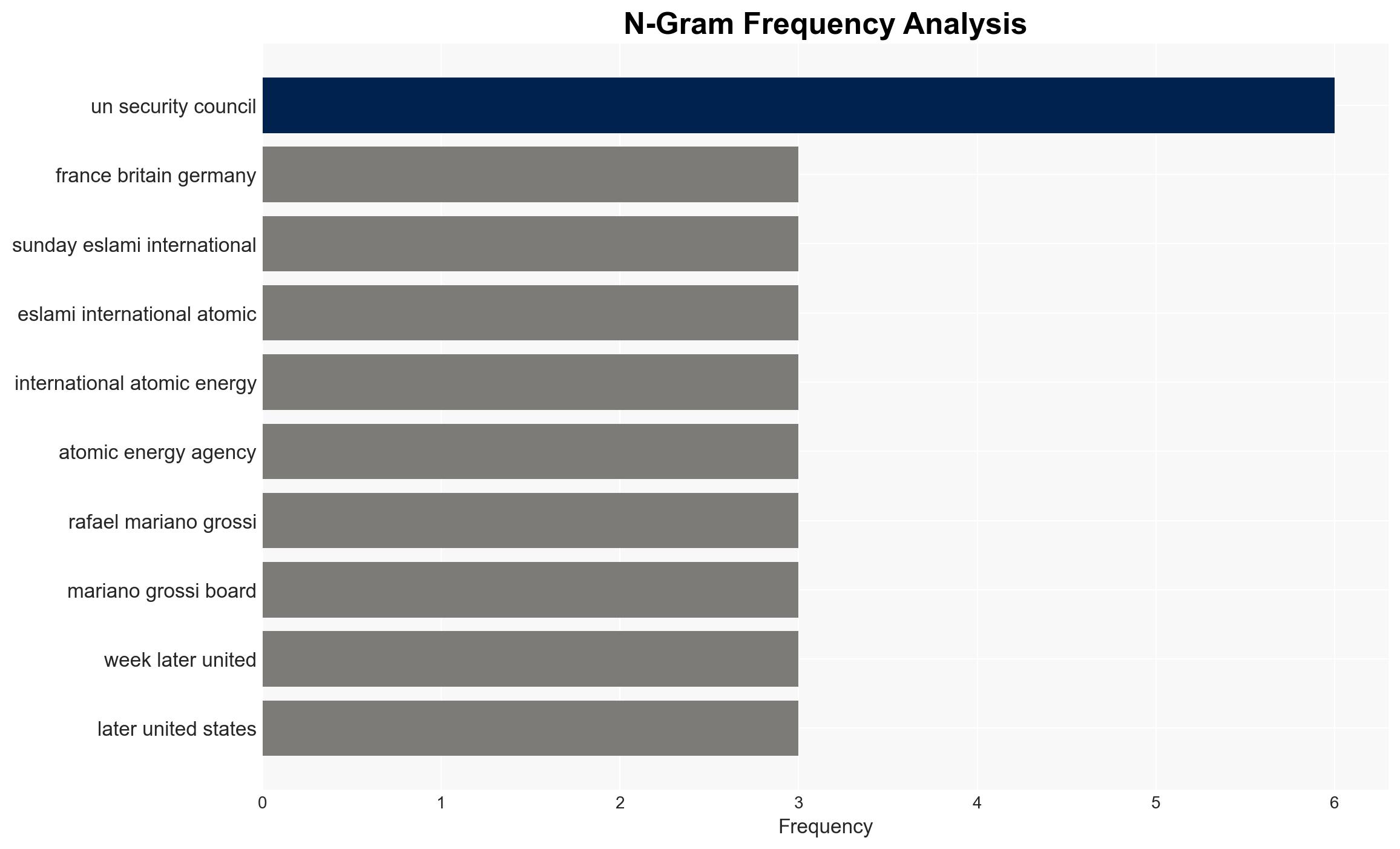European troika hell-bent on provocative moves against Iran Nuclear chief – Globalsecurity.org
Published on: 2025-11-17
AI-powered OSINT brief from verified open sources. Automated NLP signal extraction with human verification. See our Methodology and Why WorldWideWatchers.
Intelligence Report: European Troika’s Actions Against Iran’s Nuclear Program
1. BLUF (Bottom Line Up Front)
The European troika’s actions are perceived as provocative by Iran, potentially escalating tensions in the region. The most supported hypothesis is that these actions are part of a coordinated strategy to pressure Iran into compliance with international nuclear standards, despite the expiration of UN Security Council resolutions. Confidence Level: Moderate. Recommended action: Diplomatic engagement to de-escalate tensions and ensure transparency in nuclear activities.
2. Competing Hypotheses
Hypothesis 1: The European troika’s actions are a deliberate strategy to pressure Iran into compliance with nuclear agreements, leveraging international law and diplomatic channels to achieve this goal.
Hypothesis 2: The European troika’s actions are primarily reactive, driven by security concerns over Iran’s nuclear capabilities and regional influence, rather than a coordinated strategy.
Hypothesis 1 is more likely due to the structured nature of diplomatic engagements and the historical context of JCPOA negotiations. The troika’s actions align with a pattern of using diplomatic pressure to influence Iran’s nuclear activities.
3. Key Assumptions and Red Flags
Assumptions: The European troika is acting in concert with broader international efforts to manage nuclear proliferation. Iran’s nuclear activities are transparent and compliant with international standards.
Red Flags: Potential bias in Iranian state media portrayal of events. Lack of independent verification of claims regarding attacks and provocations. Possible deception in the narrative of European intentions.
4. Implications and Strategic Risks
Escalation risks include increased regional instability, potential military confrontations, and disruption of diplomatic relations. Cyber and informational warfare could intensify as both sides seek to control the narrative. Economic sanctions may be tightened, affecting global markets.
5. Recommendations and Outlook
- Engage in multilateral diplomatic talks to address concerns and de-escalate tensions.
- Encourage transparency and third-party verification of nuclear activities to build trust.
- Best-case scenario: Diplomatic resolution and re-engagement in JCPOA-like agreements.
- Worst-case scenario: Military conflict and regional destabilization.
- Most-likely scenario: Continued diplomatic standoff with intermittent provocations.
6. Key Individuals and Entities
Mohammad Eslami – Head of the Atomic Energy Organization of Iran. Rafael Mariano Grossi – Director General of the International Atomic Energy Agency.
7. Thematic Tags
Regional Focus, Regional Focus: Middle East, Europe
Structured Analytic Techniques Applied
- Causal Layered Analysis (CLA): Analyze events across surface happenings, systems, worldviews, and myths.
- Cross-Impact Simulation: Model ripple effects across neighboring states, conflicts, or economic dependencies.
- Scenario Generation: Explore divergent futures under varying assumptions to identify plausible paths.
Explore more:
Regional Focus Briefs ·
Daily Summary ·
Support us
·





